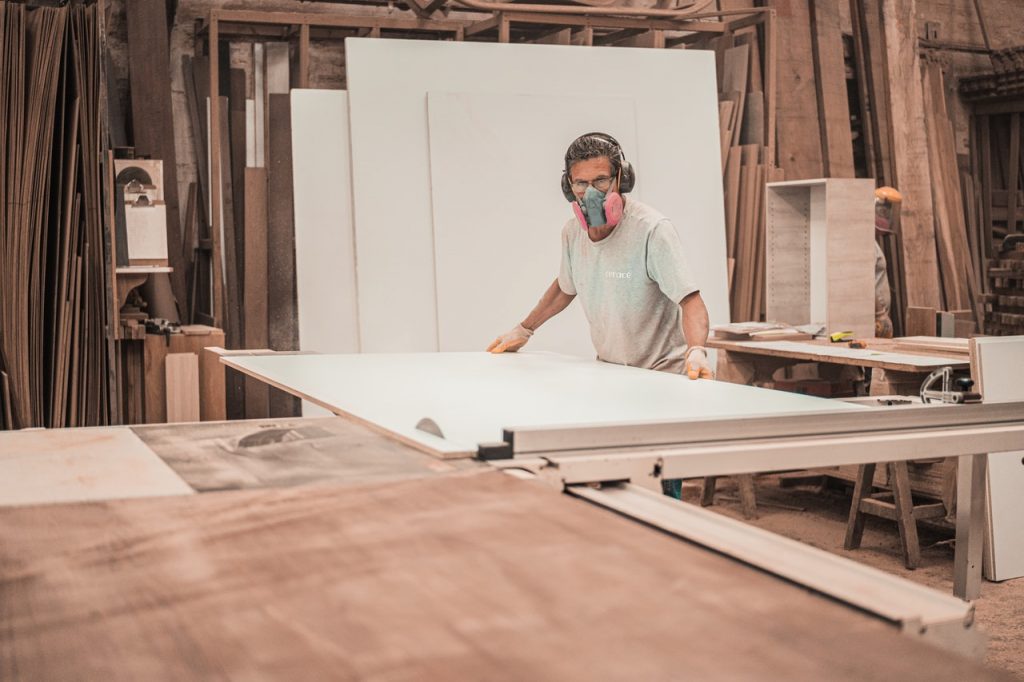Using a miter saw to cut your baseboard for a new project is probably the quickest way to get the duty done.
However, if you do not have a miter saw is it possible to cut the baseboard corners without it? Undoubtedly, you can cut the baseboard with great accuracy without a miter saw.
There are several different ways in which you can cut the baseboard corners with the alignment and accuracy being dependent on the type of tools you use.
Follow this article to get your work perfectly done without a miter saw.
Brief Overview
In this article, we will describe the following points about how to cut baseboard corners without a miter saw:
- Tools you will need
- Types of baseboard corners
- Two types of joints
- Types of saws that can be used
Here is a shortlist of things you will need for the entire process of cutting the baseboard corners without a miter saw.
Things you will need
- A pencil
- A speed square
- A tape measure
- In the case of coped joints, a coping saw
- One of the three saws (i) circular saw (ii) hand saw (iii) jigsaw
- (ii) If using a hand saw, you will need an adjustable bevel, wood screws, a carpenter’s square, glue, and 1×4 and 1×6 lumber.
- (iii) If using a jigsaw, you will need a pencil, a speed square, a tape measure, and at least 10 teeth on the blade.
Types of baseboard corners
Following are the three types of baseboards you commonly come across
Hardwood
Most of the baseboards used for business purposes are hardwood like maple, oak, etc. In other cases, pine or fir is also used.
However, before coming into actual use it is processed many times. Resultantly, it comes in pieces that are 96-inch in length and about 2-3 creeps in width.
Vinyl
Vinyl is a typical white-shaded and flexible kind of baseboard. Since it is flexible, it will accurately fit into the wall and not break.
Precisely, it will even fit into the corners where wood or specifically hardwood does not fit. It has numerous benefits however, it cannot be cut by a miter or any other saw.
The two major reasons to use vinyl in your woodwork are:
- It is flexible and will fit into each and every corner
- You will not notice imperfections in your work
Composites
Composites are almost like vinyl but they are not as flexible as them. They are relatively more flexible than normal/ordinary wood but they are less twistable than vinyl.
It has thick particleboard in the center and a really thin coating/covering of vinyl. They give a finer and more considerable appearance than vinyl with one difference being that they can be cut using a miter saw or a simple saw.
Another plus point is that composites are the most reasonable among all types of baseboards.
Two Types of Joints
In total there are over 10 different kinds of joints in woodwork. Here we will discuss two types of joints, namely:
- Coped joints
- Scarfed joints
Coped Joints
It may take more time than a miter saw but it fits accurately therefore we can say that the results are worth the effort. A jigsaw is a fine tool for getting this done (when not using a miter saw).
Follow these steps to cut baseboard corners without a miter saw:
- To expose the grainy end of the baseboard, cut it in length. This step is crucial to the jigsaw’s working.
- Alongside the decorative curve of the baseboard, you need to make a back-cut using a jigsaw.
- Afterward, using a bench, secure the wooden workpiece.
- Along with the surface of the baseboard, make a 45° curved angle to the backside.
- After making a cut file the baseboard with sandpaper to provide it with a smooth finish.
- Now that you are done with all the corners, add paint to give a better and smoother appearance. This step will also allow you to fill any sort of left gaps that may appear on the wall and the floor later.
Scarfed Joints
This is a relatively more intricate process than the previous one. The scarf joint is pretty similar to the coped joints but it includes the merging of two baseboards.
Follow these steps to cut baseboard corners:
- Make cuts of 22.5° or 45° on the two baseboards that you want to merge. Both angles should be made in an opposite direction on both boards.
- Now set the wood pieces like so, that the joint overlaps the wall studs. Here you can secure the wood by fixing two nails.
- The next step is to use some nails or glue to fix the board with the wall as mentioned above.
- Now after applying some caulk, let the joints settle.
- You may paint it in the last step to give a smoother finish.
Types of Saws that can be used
If you are not using a miter saw, you have three other options which can be used instead of it.
- Circular saw
- Hand saw
- Jigsaw
Circular saw
This tool is perfect for both low-profile and wide baseboards.
Follow these steps to get accurate cuts to cut baseboard corners.
- On the first hand, making sure that the holes are not too close to each other, drill four holes. Drill them with the pivot bit in every corner block of a piece of trim. In every direction, place two holes at the top and two at the bottom.
- Now place a block in one corner of the room. Afterward, place a level next to it and hammer the nails on the exposed side of the block against the wall. This will provide stability.
- Then sink the nail heads and keep on repeating the steps until you have fixed blocks in every corner of the room.
- Now measure the distance between two blocks. Mark the longer piece of trim. To this make another mark a few inches away from the end of the trim. And start the measurement from there.
- Using a try square, make sure that the straight lines you draw across the trim are completely square.
- Now cut the trim along the two lines using a circular saw.
- In the next step put the cut trim between two blocks. To this drill pilot holes along the upper and lower edges of the trim piece (15 inches)
Hand Saw
On the very first hand, it is important to get a type of wood that is straight and wrap-free. Therefore, we recommend oak or fir.
Follow these steps to cut baseboard corners.
- Cut two 12-inch lengths of 1×6 lumber while for 1×4 lumber cut a single 12-inch length.
- In the next step, you need to screw the 1×4 and 1×6 lumber together. For this purpose, you need to apply wood glue on the long edges of 1×4 lumber and place it on the table. To this, place the 1×6 lumber upright and screw them together using ½ screws.
By the end, you will have a 4-inch open box.
- Now place the bevel at 45° and mark top angles on two sides of the box. Next, draw a perpendicular pencil line on the outside of the box.
- Now use your hand saw to cut through the marked angles making sure that they are aligned with the perpendicular lines (actually pencil line).
- Now place the baseboard up against the side of the box and use the marks on the baseboard to see the length of the kerf in the box.
Jigsaw
It is the cheapest option you can go for if not choose miter cut. But before using a jigsaw or a coping saw one needs training or at least a little bit of practice.
Follow these steps to cut baseboard corners:
- Take a measuring tape to measure the baseboard from one end to the cutting point. Mark the cutting point with a pencil and by using a speed square mark the cutting line.
- Pick the jigsaw and place it neatly on the cutting line. While the shoe rests on the baseboard make sure that the baseboard is fully secured.
- Now switch on the jigsaw and slowly take it near to the baseboard.
Miter Box Formula
These handheld tools are really easy to work with. Once you have placed the miter guide on your baseboard, place the tool and move it to and fro. Since the guide is fitted with screws you will be cutting on the accurate angles.
This process (miter box) is quite old but people still use it. It might be slower than other processes but it will provide you with fine and accurate cuts.
Basically, the miter box is a small rectangular box with a fitted backsaw. The saw is small and stiff.
Once you have set the box, make the cuts through the baseboard.

How to Cut Baseboard Corners Without Miter Saw – Final Verdict
We hope that the article has prepared you to work on your new baseboard project without using a miter saw.
However, some of the alternatives to miter saw might require mastery. For instance, you might need the practice to handle a jigsaw.
For this very concern, we have provided numerous options. And on this note, we mark the end of our article.
Let us know in the comments if you have any better ways to cut the corners of the baseboard without a miter saw.

